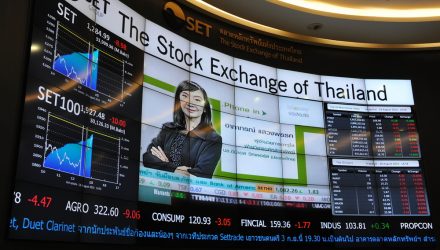For the majority of investors right now, allocating capital to emerging markets (EM) might feel like letting your daughter go to the prom with the resident bad boy—it’s just not happening. However, the pandemic isn’t hurting all EM countries the same way and certain areas are able to mute the effects of the virus, which puts single-country exchange-traded funds (ETFs) into play.
“As investors rushed to safety, major emerging economies lost more than $100 billion in foreign currency reserves in the month of March alone. Trade flows shrank. New capital inflows dried up. In many ways, the pandemic has been harder on emerging economies than the 2008 global financial crisis,” a Foreign Affairs article noted.
“But not all emerging markets have suffered equally or from the same ailments. Some economies are still included in emerging-market indices even though they have mostly emerged: South Korea and Taiwan, for example,” the article added. “These, along with other emerging economies, such as Thailand, that have strong balance sheets, face what might be called “First World problems”: worries over how to maintain employment while managing the public health threat from COVID-19, the disease caused by the novel coronavirus.”
That said, it might suit investors to check out the iShares MSCI South Korea Capped ETF (EWY), iShares MSCI Taiwan Capped ETF (EWT) and iShares MSCI Thailand Capped ETF (THD).
Additionally, if traders are sensing broader weakness in EM ahead, they can make a relative value exchange-traded fund (ETF) play in the Direxion MSCI Developed Over Emerging Markets ETF (NYSEArca: RWDE). RWDE provides a means to not only see developed markets perform well, but a way to access a convergence/catch-up in performance of DM relative to EM, a spread that has clearly widened over the past 6 months. The fund seeks investment results, before fees and expenses, that track the MSCI EAFE IMI – Emerging Markets IMI 150/50 Return Spread Index.
The index measures the performance of a portfolio that has 150% long exposure to the MSCI EAFE IMI Index (the “Long Component”) and 50% short exposure to the MSCI Emerging Markets IMI Index (the “Short Component”). On a monthly basis, the Index will rebalance such that the weight of the Long Component is equal to 150% and the weight of the Short Component is equal to 50% of the Index value. In tracking the Index, the Fund seeks to provide a vehicle for investors looking to efficiently express a developed over emerging investment view by overweighting exposure to the Long Component and shorting exposure to the Short Component.
For more market trends, visit ETF Trends.

